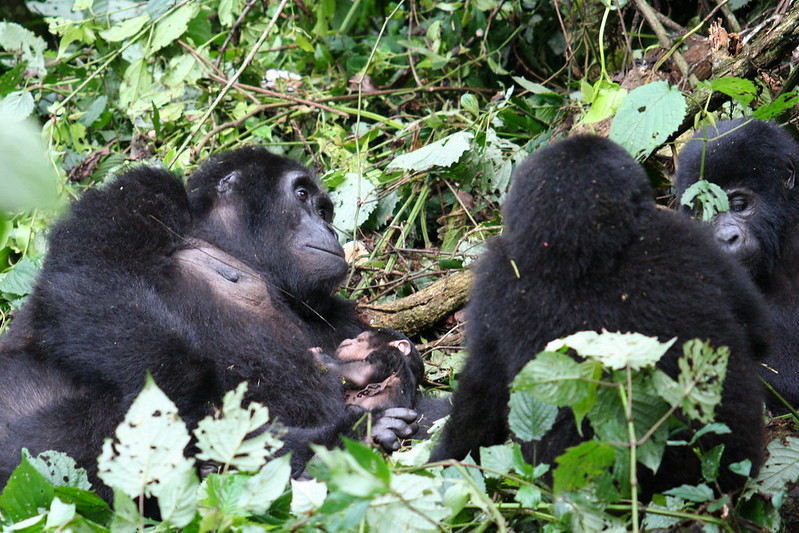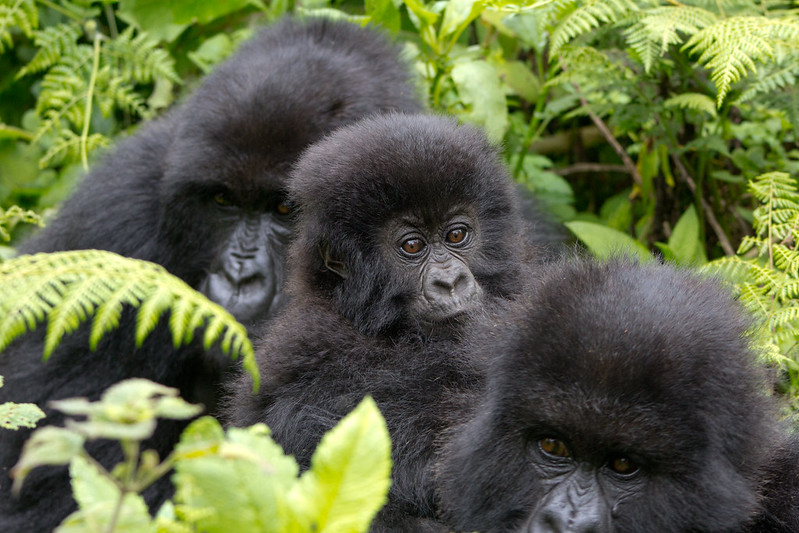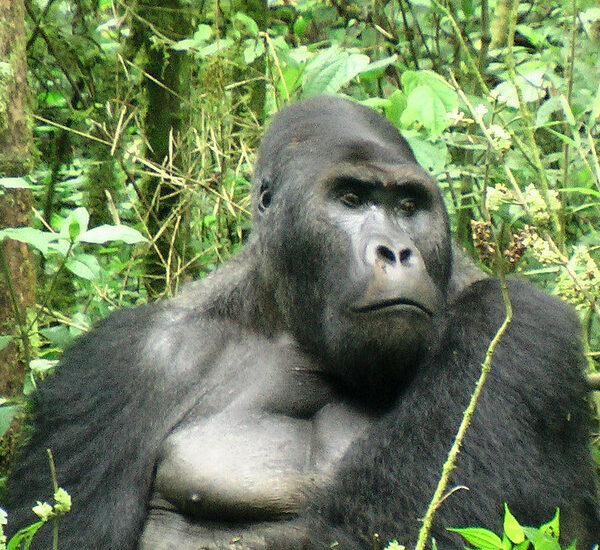Rushaga Gorilla groups. Bwindi Impenetrable Forest National Park is home to the endangered Mountain Gorillas,…
What is the Age Limit for Gorilla Trekking?
What is the Age Limit for Gorilla Trekking?
Gorilla trekking is one of the most awe-inspiring and unforgettable wildlife experiences you can have. Trekking through the lush forests of Uganda, Rwanda, and the Democratic Republic of Congo (DRC) to encounter the majestic mountain gorillas in their natural habitat has become a bucket-list adventure for many. However, as with any wildlife adventure, there are certain rules and regulations in place to ensure the safety of both the animals and the visitors. One of the most important regulations when planning a gorilla trek is the age limit.
The age limit for gorilla trekking varies depending on the country and specific park, but it is designed to balance the safety of both the gorillas and the trekkers. Understanding these age restrictions is crucial for anyone planning a gorilla trekking experience. In this article, we will dive into the details of the age limit for gorilla trekking in Uganda, Rwanda, and DRC, why these restrictions exist, and how they impact your trekking experience.
Why is There an Age Limit for Gorilla Trekking?
The primary reason for the age limit on gorilla trekking is to protect the safety of both the trekkers and the gorillas. Gorilla trekking is physically demanding and can be strenuous, requiring trekkers to hike through dense vegetation and rugged terrain, sometimes for several hours. It is essential to ensure that trekkers are physically capable of handling these challenges to avoid accidents or exhaustion during the trek.
From a conservation perspective, it is also important to consider the well-being of the gorillas. The gorillas are a vulnerable species, and human interactions with them are strictly regulated to minimize stress and prevent the transmission of diseases. It’s been found that gorillas share more than 98% of their DNA with humans, making them highly susceptible to human-borne diseases. Allowing young children or elderly individuals who may not fully understand how to behave around gorillas could inadvertently cause stress to the animals or pose health risks.
By implementing an age limit, authorities ensure that the trekking experience is both safe for the visitors and respectful of the gorillas’ needs and habitat.
Age Limit for Gorilla Trekking in Uganda
In Uganda, the age limit for gorilla trekking is 15 years and older. This regulation applies to all national parks in Uganda where gorilla trekking is allowed, including Bwindi Impenetrable Forest and Mgahinga Gorilla National Park.
Why 15?
The age restriction of 15 years is set for several reasons. Trekking through Uganda’s dense and rugged terrain requires a reasonable level of physical fitness, which younger children may not possess. The altitude and uneven ground can also be challenging for younger trekkers. Children under 15 may also struggle with the stamina needed to complete the trek, especially if the hike takes several hours.
Furthermore, trekkers under 15 are likely to be more unpredictable in their behavior, which could increase the risk of disturbing the gorillas or inadvertently causing them stress. Young children may also be more prone to contracting illnesses, which could be transmitted to the gorillas.
For these reasons, the Uganda Wildlife Authority (UWA) has firmly set the age limit at 15 to ensure the safety of both the tourists and the mountain gorillas.
Exceptions and Special Cases
There are rare instances in which exceptions to the age limit may be considered, but these are typically only allowed under special circumstances. However, as a general rule, children under 15 will not be permitted to trek to see the gorillas in Uganda. It is also essential to note that anyone wishing to trek must be physically fit and prepared for the demanding nature of the trek.
Age Limit for Gorilla Trekking in Rwanda
In Rwanda, the age limit for gorilla trekking is similarly 15 years and older. This rule applies to visitors trekking in Volcanoes National Park, one of the most famous parks for gorilla trekking in the world.
Why 15?
Rwanda has established this age limit to ensure the safety and comfort of both trekkers and gorillas. Like Uganda, the trek in Rwanda can be physically demanding, and young children may not have the necessary physical capability to complete the trek. The hike often involves steep climbs, dense forest, and at times, muddy conditions. Trekking can take anywhere from 1 to 6 hours depending on the location of the gorillas, and young children may struggle to keep up or become fatigued.
Additionally, younger trekkers may inadvertently disturb the gorillas, who are sensitive to human presence. A child might be more likely to make loud noises, behave unpredictably, or fail to follow the park rangers’ instructions regarding how to behave around the gorillas.![]()
For these reasons, the Rwanda Development Board (RDB) enforces the age limit of 15 to ensure that the experience remains both enjoyable and safe for all involved, especially the gorillas.
Special Circumstances
Similar to Uganda, Rwanda is generally strict about enforcing the age limit of 15. There are no formal exceptions to the rule for those under 15, though the park authorities may occasionally consider requests for special circumstances. If you’re planning a trek to Rwanda with a child who is under 15, it’s essential to look into alternative activities, such as visiting the Kigali Genocide Memorial or taking part in cultural tours, which can also offer a meaningful experience of Rwanda.
Age Limit for Gorilla Trekking in the Democratic Republic of Congo (DRC)
In the Democratic Republic of Congo (DRC), the age limit for gorilla trekking is 15 years and older, similar to the rules in Uganda and Rwanda. The DRC’s Virunga National Park, which is home to both mountain gorillas and eastern lowland gorillas, is one of the top places for gorilla trekking in Africa. The park’s management follows similar policies to those in Rwanda and Uganda, focusing on maintaining the safety of both visitors and gorillas.
Why 15?
As in the other countries, the primary reason for the 15-year age limit in DRC is the physical demands of trekking. The terrain in Virunga National Park is rugged, and the hikes can be long and difficult. Visitors are expected to be in good physical condition and capable of traversing steep, muddy hills, which can be exhausting for young children.
Additionally, keeping human interactions with gorillas to a minimum is a key aspect of conservation efforts in DRC. Allowing younger visitors could inadvertently increase the chances of stress or disruptive behavior around the gorillas, who are sensitive to their surroundings. The age limit helps mitigate this risk.
What Happens If You Are Below the Age Limit?
If you are below the age limit of 15, you will not be allowed to participate in the gorilla trekking experience, regardless of which country you are visiting. This rule is strictly enforced in all three countries—Uganda, Rwanda, and DRC.
For families traveling with children, there are plenty of other activities available in these countries. In Rwanda, for example, you can explore Kigali, visit Lake Kivu, or take part in cultural experiences. In Uganda, you can visit Murchison Falls National Park or engage in a zebra safari in Kidepo Valley. The DRC also offers opportunities for exploring Virunga National Park’s wildlife, visiting Lola Ya Bonobo Sanctuary, or experiencing Congo’s rich cultural heritage.
Alternatives for Young Children
While gorilla trekking is off-limits for children under 15, there are still ways for families to enjoy the beauty of these countries. Consider these alternative activities:
- Wildlife Viewing: Both Uganda and Rwanda are home to a variety of wildlife, including elephants, buffalo, and numerous bird species. Safari tours in national parks like Queen Elizabeth National Park in Uganda or Akagera National Park in Rwanda offer great family-friendly experiences.
- Cultural Experiences: Both countries offer a rich cultural heritage that can be explored through visits to local villages, museums, and art galleries. In Rwanda, visiting the Kigali Genocide Memorial is an educational and impactful experience.
- Nature Walks and Hiking: There are many scenic and less strenuous hikes suitable for families in both countries, such as nature walks in the Volcanoes National Park or visiting the Ngamba Island Chimpanzee Sanctuary in Uganda.
The age limit for gorilla trekking in Uganda, Rwanda, and the DRC is generally set at 15 years and older, primarily for safety reasons. These regulations ensure that trekkers are physically capable of handling the demands of the trek and that gorillas are not disturbed by unpredictable behavior. The age limit also helps mitigate the risk of disease transmission between humans and gorillas, which is a significant concern in these close encounters.
For families with younger children, there are many other enriching and exciting activities in these countries, so while you might not be able to take a child under 15 gorilla trekking, there are still plenty of ways to experience the beauty and culture of East Africa.


